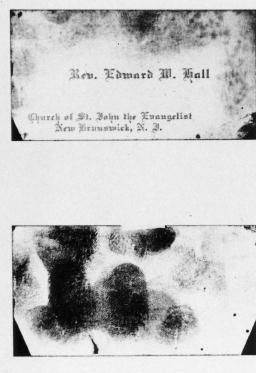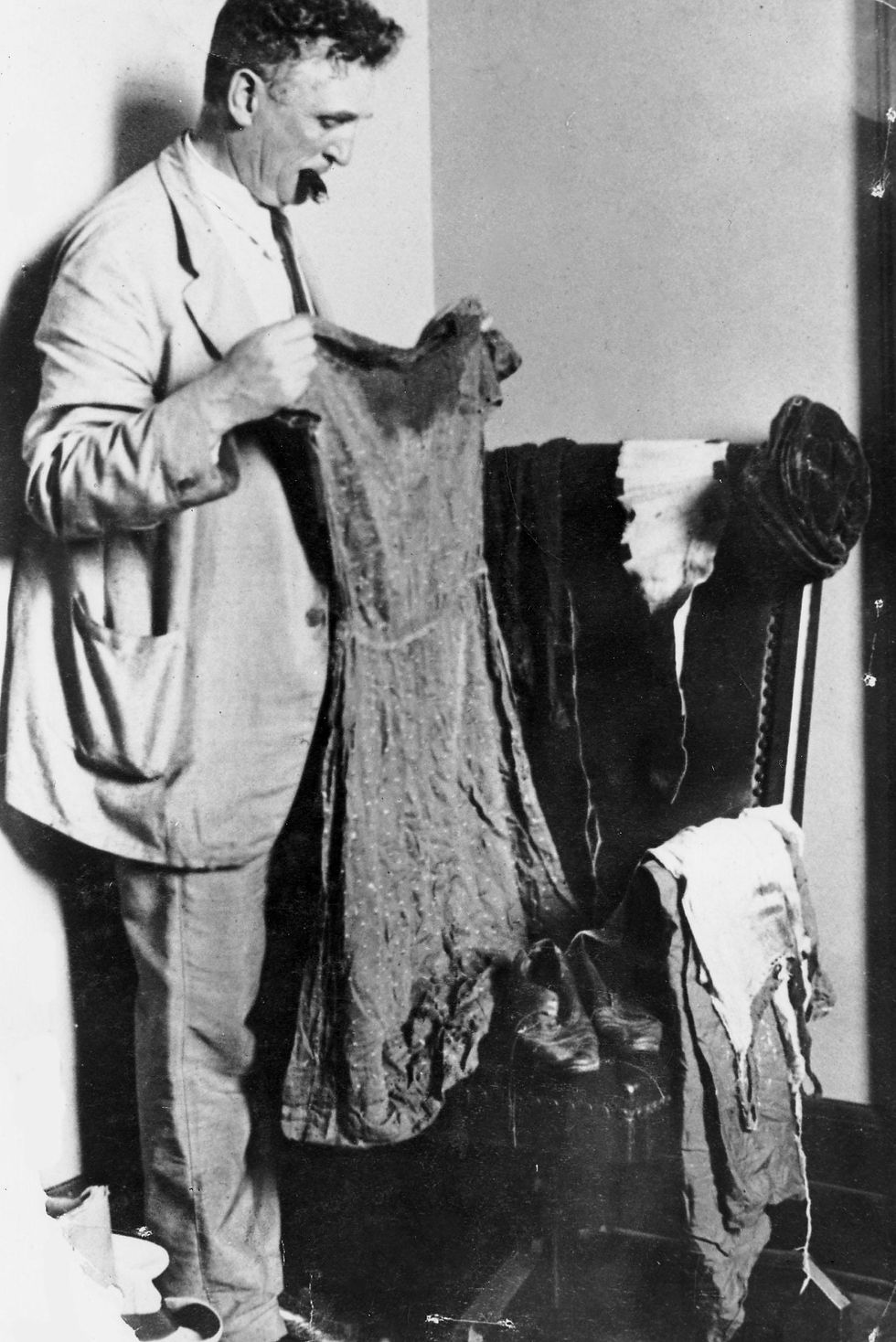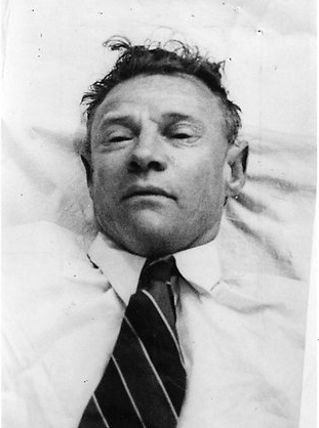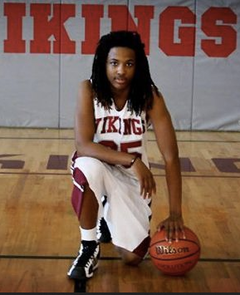The Mysterious Deaths of Hall and Mills
- Paige Phillips
- Jan 20, 2019
- 5 min read
On September 16th 1922, the bodies of a woman and a man were discovered by a pair of teenagers out for a stroll in a field near a farm. Both bodies were on their backs and both were shot in the head with a 32 calibre pistol. The man had been shot once whist the woman had been shot 3 times. The bullet entered the man’s head over his right ear and exited through the back of his neck. The woman was shot under her right eye, over the right temple and over the right ear. Both the bodies appeared to have been positioned side by side after their death, as both had their feet pointing towards a crab apple tree. The man had a hat covering his face and his calling card was placed at his feet. Torn-up love letters written by the woman to the man were placed between the bodies.

The man was identified as Edward Hall, an episcopal priest, whilst the woman was Eleanor Mills, a member of Hall’s choir who he was rumoured to have been having an affair with. Mills’ throat had been severed, and police officers on the scene obtained that they had both been dead at least 24 hours earlier, as there were maggots in the neck wound.

Most of the physical evidence from the crime scene was compromised, due to the issue the jurisdiction posed on the police. The crime scene was near the Middlesex County and Somerset County border. The Middlesex County police arrived on the scene first, but the crime scene was actually discovered to be in Somerset County. Whilst the confusion around who had jurisdiction was discussed, many locals trampled the scene, took souvenirs and passed Hall’s calling card around, ruining any potential physical evidence there may have been.

Eleanor Mills, who was 34 at the time of her death, was the wife of James E. Mills. They lived in New Brunswick, New Jersey with their two children, Charlotte (born 1906) and Daniel (born 1910). Her husband James was acting sexton at her local church, as well as being a full-time janitor at the Stirling Elementary School. Eleanor was discovered wearing a blue dress with red polka dots, black silk stockings and brown shoes. She had worn a blue velvet hat that was found on the ground near her body, and her brown silk scarf was wrapped around her throat. Her arm had a minor bruise, and there was a tiny cut on her lip. Her left hand had been positioned so that it was placed on the man’s right thigh. Her tongue had also been cut out.

Edward Hall was 41 at the time of his death and a New Brunswick Episcopal priest who grew in Brooklyn, NY. He gained his degree in Theology in Manhattan, and then moved to Basking Ridge, New Jersey, where he met his wife Frances.
His body was found with his right arm position to touch the woman’s neck. His hat covered his face, which concealed the gunshot wound to his head. He wore glasses and there was a small bruise on the tip of his ear, as well as abrasions found on his left little finger and right index finger. A wound was found 5 inches below his kneecap, on the calf of his right leg. His watch was also missing, but there were coins in his pocket.
Witnesses:
Jane Gibson – ‘the pig lady’
Jane Gibson and her son William lived in an old barn that can been converted into a living space. She told investigators that on the night of the murder, her dog was barking loudly at around 9pm. She went outside of her house and saw a man standing in her cornfield, so decided to ride her mule to approach him. As she got closer to him, she realised that there were four people standing near a crab apple tree. She then heard gunshots and one of the figures fell to the ground, and testified that she heard a woman scream “don’t!” three times. She then turned her mule around and went back towards her house, where she heard another 3 gunshots, and saw a second person fall down, presumably dead. She said she heard a woman shout the name “Henry”.
When brought to trial to act as the prosecutions witness, the defence portrayed her as uneducated and crazy; attempting to ruin her credibility. Yet, Gibson’s account varied, differing when she spoke to the police, the newspapers, and at the trial. During the trial, her mother stood up in the courtroom and yelled that her daughter was a liar, ruining her credibility in the case.
The maid
A maid that had previously served the Halls family confessed that the reverend wanted to annul his marriage and elope with Mills. However, this confession came about 4 years after the initial trial.
Suspects:
1. Frances Noel Hall
Frances was the wife of Edward. She was related to many of the wealthy families of New Brunswick, including the Carpenders, Nielsons and possibly the Johnsons of Johnson & Johnson. The prosecutors claim she had a role in her husband’s murder as she found out that he was cheating on her with Eleanor. She claimed to have spent the evening of the murder at their home. She was worried when her husband had not returned home, so went out in search for him, but after being unsuccessful, returned to their house.

2. Henry Hewgill Stevens
Henry was the brother-in-law of Edward. He was a retired exhibition marksman and lived in Lavallette, New Jersey. The prosecution, at trial, claimed he fired the shots. Henry testified that he was fishing miles away from the murder, and three witnesses corroborated his testimony.
3. William Carpender Stevens
Another one of Edward’s brother-in-law’s, William owned a 32-caliber pistol, like the one used in the murder, although the firing mechanism was supposed to have been filed down so that he could not hurt himself with it. His fingerprint was found on a calling card left at the scene of the crime. William had a personality which was consistent with Asperger Syndrome, although the syndrome had not yet been clinically described during his lifetime. He was a colourful character on the witness stand, and delivered a credible and sympathetic testimony.
4. Henry de la Bruyere Carpender
Hendry Carpender was the cousin of Edward’s wife, Frances. He worked as a Wall Street stockbroker, and although he was an initial suspect, he was never bought to trial.
5. Ku Klux Klan
William Kunstler was an attorney and liberal activist, who wrote the 1964 book titled “The Minister and the Choir Singer”. In his book, he theorized that the Ku Klux Klan had been responsible for the couple’s demise, based on the facts that the Klan were a very violent organization that were active during the 1920’s. However, he acknowledged that the Klan had not previously killed anyone in the state.
Despite Frances, William and Henry being brought to trial, they were never charged as the prosecution could not make a convincing case, and to this day the case still remains unsolved.







Comments